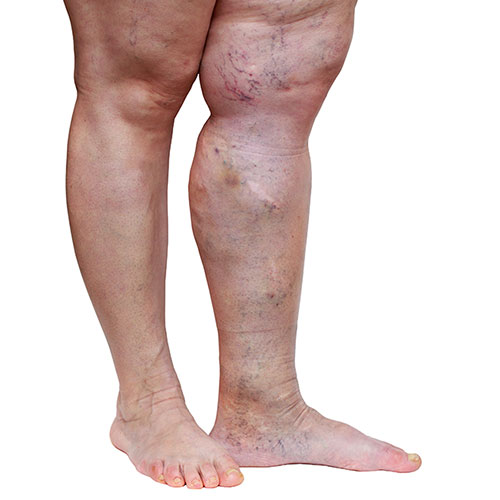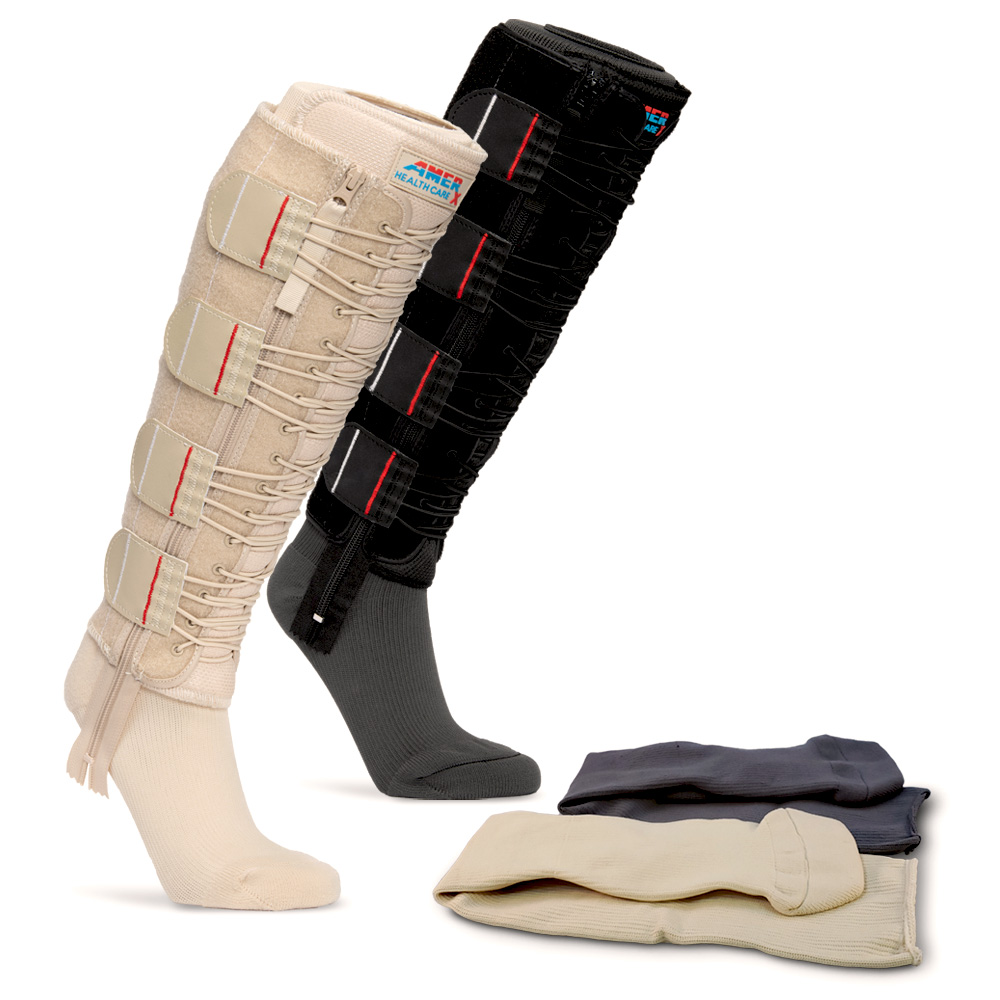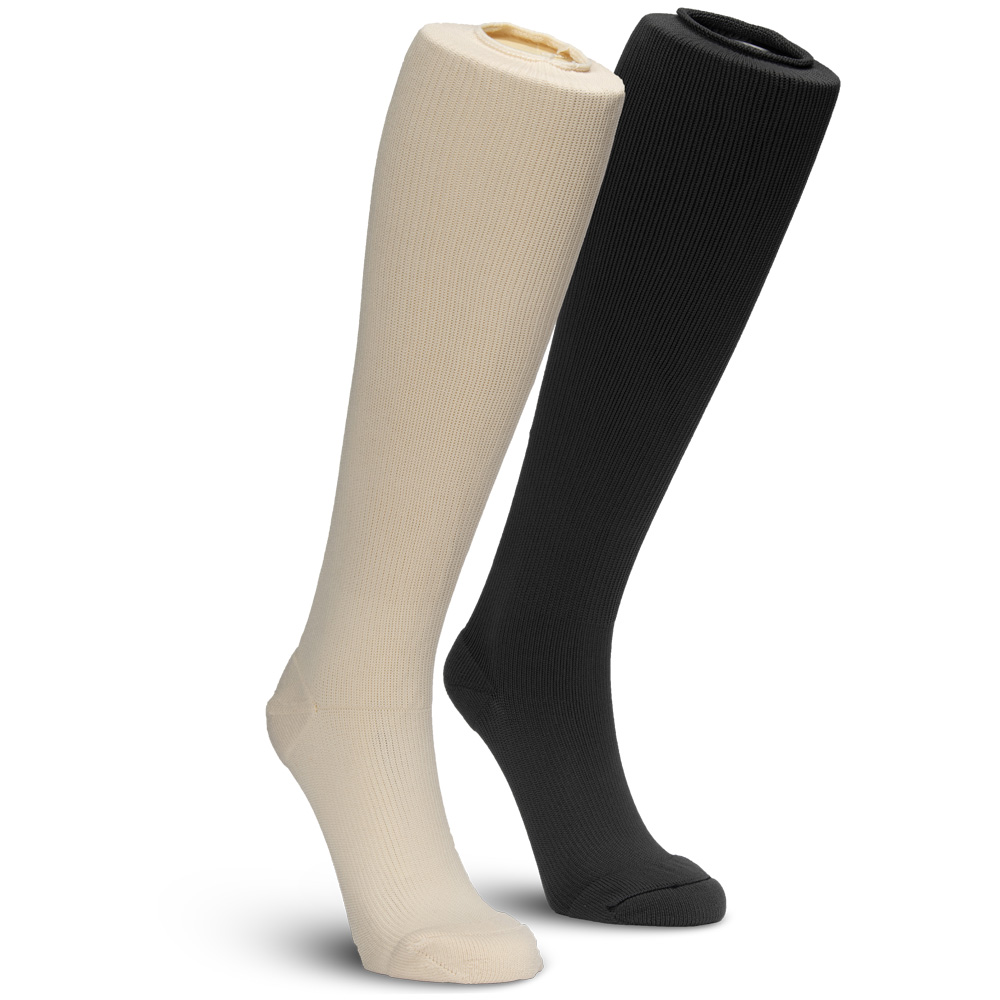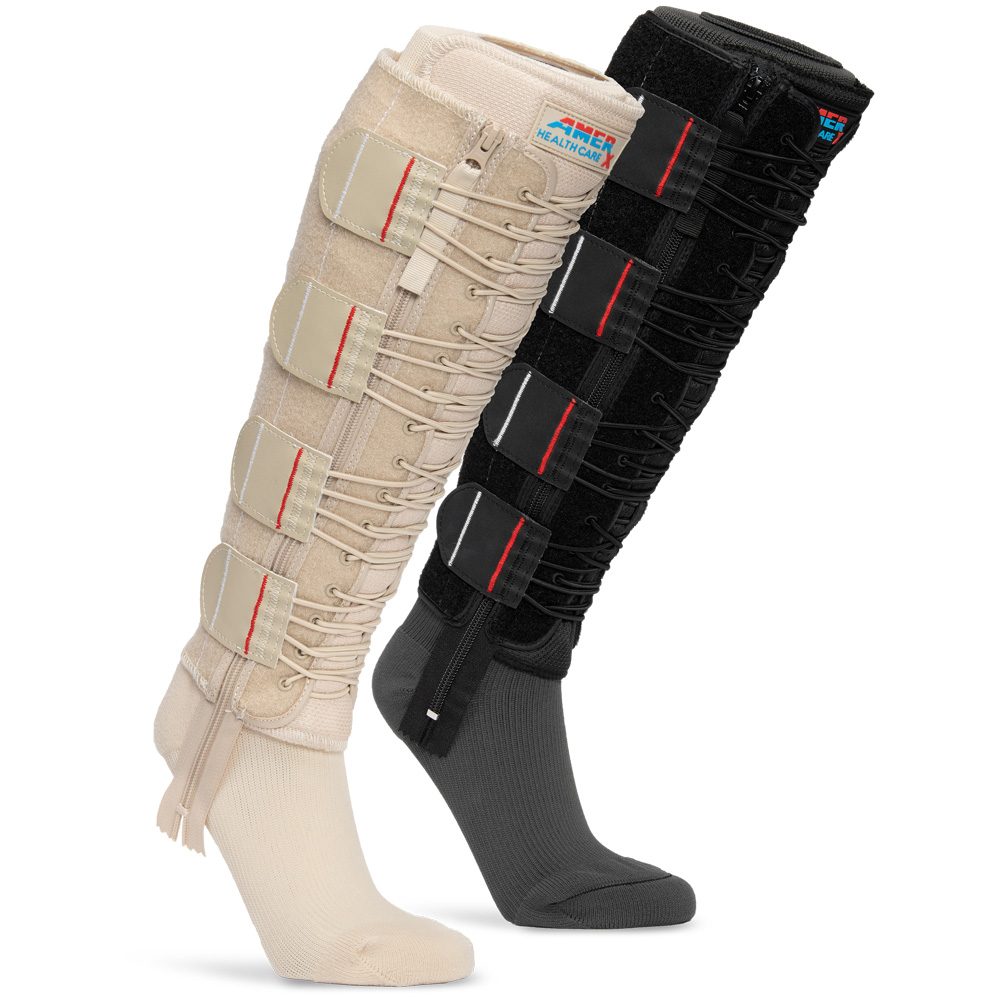Edema

What is Edema?
Edema is swelling caused by having too much fluid in your body and can produce many different symptoms. There are many potential causes of edema and some people are at higher risk for edema than others. This is why it is important to determine the cause of the edema when it is present.
While edema can occur anywhere in the body, it is most likely to involve the arms and legs. For those experiencing edema of the legs, help is available with the EXTREMIT-EASE Compression Garment. This easy-to-apply garment is proven to ease leg edema and reduce further complications.
What Causes Edema?
Many things can cause edema. It is important to see a doctor if you think you have edema as it can be a sign of a serious medical condition. Medical problems that can cause edema include kidney disease, heart disease, lung disease, liver problems, metabolic imbalances, and more. Edema can also be associated with pregnancy, the premenstrual phase of the menstrual cycle, inactivity, a diet high in salt, and can be a possible side effect of some medications.
What are Some Symptoms of Edema?
- Swollen Legs
Of all the body parts where edema can occur—arms, wrists, hands, legs, ankles, and/or feet—the legs are the most likely part of your body affected, simply because of gravity. When extra fluid builds up in the body, gravity creates a pull that makes it more likely for that fluid to end up in the legs. While it is possible for the fluid to end up in ankles and feet also, it is more common for it to just stay in the legs. When this occurs, you may notice an increase in the size of your legs. They can look and feel larger. This occurs most often with edema if you spend more time sitting with your legs hanging down. - Varicose Veins
When edema is present in your legs, it can cause veins to not work properly, resulting in varicose veins. The veins in your legs are supposed to return blood to the heart, but if they do not return blood to the heart, that blood can accumulate in the veins causing them to look large and twisted and, sometimes, feel lumpy. For some people, these varicose veins can have an undesirable appearance, especially when the veins are visible under the surface of the skin with a blue or purple coloration. - Heavy Legs
Fluid is heavy. When a lot of fluid collects in your legs, it can change the weight of your legs and can make them feel heavy. Sometimes people say it feels like they have weights around their legs when this happens. This can make walking difficult or uncomfortable, which is not just unpleasant and inconvenient, it is also dangerous, because walking less can contribute to edema. This can begin a bad cycle where heavy legs lead to walking less and reduced activity contributes to edema. - Painful Legs
If enough fluid accumulates in your legs, it can cause pain. This pain can make walking difficult. People who experience this pain often feel more comfortable with their legs hanging down (dependent) instead of putting their legs up. This can start another bad cycle as hanging your legs down can make edema worse while putting your legs up can help edema. While this pain can happen anywhere in your legs, it most commonly occurs in the lower legs, between the knees and ankles.
Do I Have Edema?
Edema can cause different types of changes throughout your body but most commonly causes swelling. Some ways to determine if you have edema include:
- Swelling
Swelling typically takes place just below the skin, so it is normally easy to see . When edema occurs, it typically happens in the upper body in the arms, wrists, and hands or in the lower body in the legs, ankles, and feet. - Pitting
When edema is present, sometimes you can press on the area and see if it leaves an indentation for several seconds or more, as opposed to the indented area immediately going back to normal when the pressed finger is removed. If the indentation remains after you push on the area, this is referred to as “pitting.” - Skin Changes
Skin over an area of swelling may look stretched and / or shiny and sometimes the hair growth over an area of edema is decreased.
How is Edema Treated?
If you think you may have edema, visit your doctor to determine the cause of your edema. In some cases, oral medications are needed, however the cornerstone of any edema treatment is compression therapy.
Applying compression to legs gives veins the help they need to move blood and fluid back up into the body. While many graduated compression garments on the market have reputations for being hard to apply and uncomfortable to wear, the EXTREMIT-EASE Compression Garment is designed to be different.
AMERX Health Care designed the EXTREMIT-EASE Compression Garment with your ease and comfort in mind. The garment’s unique design uses a zipper and bungee cords with wide tabs to make it easy for you to properly apply and adjust without additional help from a medical professional. Made with breathable fabric that does not slip or bunch, EXTREMIT-EASE can be worn comfortably for hours, so you can get the most from your compression therapy.
*If you are experiencing any symptoms suggestive of a medical emergency, contact a physician or seek urgent care immediately.
EXTREMIT-EASE Can Help!
Use EXTREMIT-EASE Compression Garment and AMERIGEL Skin Care products daily for easy and effective management of Edema and Chronic Edema.








